Japan under Kōmei: Emperor 10 March 1846 - 30 January 1867
1853-1865 Silver Shu 15x9mm (1.89 grams) 0.968 Silver (0.0588 oz. ASW)
Reference: C# 12, JNDA# 09-53
Certification: PCGS Genuine 390744.80/35414070
定 常銀 是座 , Incuse stamp 定 (= Jo) over 4 kanji in pearl border.
一 朱 銀 , 3 vertical kanji in pearl border. You are bidding on the exact item pictured, provided with a Certificate of Authenticity and Lifetime Guarantee of Authenticity.
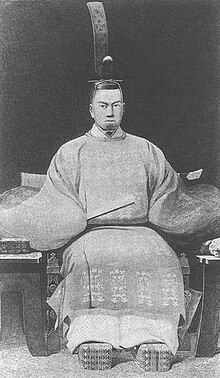 Emperor Kōmei (孝明天皇, Kōmei-tennō, 22 July 1831 - 30 January 1867) was the 121st Emperor of Japan, according to the traditional order of succession. Kōmei's reign spanned the years from 1846 through 1867, corresponding to the final years of the Edo period. Emperor Kōmei (孝明天皇, Kōmei-tennō, 22 July 1831 - 30 January 1867) was the 121st Emperor of Japan, according to the traditional order of succession. Kōmei's reign spanned the years from 1846 through 1867, corresponding to the final years of the Edo period.
During his reign there was much internal turmoil as a result of Japan's first major contact with the United States, which occurred under Commodore Perry in 1853 and 1854, and the subsequent forced re-opening of Japan to western nations, ending a 220-year period of national seclusion. Emperor Kōmei did not care much for anything foreign, and he opposed opening Japan to Western powers. His reign would continue to be dominated by insurrection and partisan conflicts eventually culminating in the collapse of the Tokugawa shogunate shortly after his death and the Meiji Restoration in the beginning of the reign of his son and successor Emperor Meiji. Prince Osahito was enthroned as Emperor on 10 March 1846 upon the death of his father. The succession was considered to have been received by the new monarch; and shortly thereafter, Emperor Kōmei is said to have acceded the throne. The years of Kōmei's reign correspond with a period in which Tokugawa Ieyoshi, Tokugawa Iesada, Tokugawa Iemochi, and Tokugawa Yoshinobu were leaders at the pinnacle of the Tokugawa shogunate. On 8 July 1853 US Commodore Matthew Perry arrived with his "Black Ships" to force trade with Japan. The Tokugawa shogunate, which had controlled military and civil affairs in Japan's feudal provinces for some three centuries, proved unable to meet the new challenge of open trade with the West. At the time, Emperor Kōmei still retained only symbolic power at his court in Kyoto. As the shogunate, divided by internal disputes, gradually surrendered sovereignty to the foreign powers, under threat of military force, Emperor Kōmei began to assert himself and regain many of the powers his ancestors had conceded to the Tokugawa clan at the close of the Sengoku ("warring states") period. The Emperor's younger sister, Imperial princess Kazu-no-Miya Chikako (和宮親子内親王), was married to the Tokugawa shōgun Tokugawa Iemochi as part of the Movement to Unite Court and Bakufu.[8] Both the Emperor and his sister were against the marriage, even though he realized the gains to be had from such familial connections with the true ruler of Japan. Emperor Kōmei did not care much for anything foreign, and he opposed opening Japan to Western powers, even as the shogun continued to accept foreign demands. The "Order to Expel Barbarians" Emperor Kōmei was infuriated with nearly every development during his reign as Emperor, and during his lifetime he never saw any foreigners nor did he know much about them. Unequal trade treaties with the Western powers, such as the Treaty of Kanagawa and the Harris Treaty were signed without Imperial sanction and in spite of the Emperor's refusal to approve them. He twice expressed his will to resign from his position in protest. During his reign he started to gain more power as the Tokugawa shogunate declined, though this was limited to consultation and other forms of deference according to protocol. Emperor Kōmei generally agreed with anti-Western sentiments, and, breaking with centuries of imperial tradition, began to take an active role in matters of state. As opportunities arose, he fulminated against the treaties and attempted to interfere in the shogunal succession. His efforts culminated in 1863 with his "Order to expel barbarians". Although the Shogunate had no intention of enforcing the order, it nevertheless inspired attacks against the Shogunate itself and against foreigners in Japan: the most famous incident was the slaying of British trader Charles Lennox Richardson, for which the Tokugawa government paid an indemnity of one hundred thousand British pounds. Other incidents included the bombardment of Shimonoseki and Kagoshima, and the destruction of Japanese warships, coastal guns, and assorted military infrastructure throughout the country. These incidents showed that Japan could not match the military might of the Westerners at the time, and that confrontation could not be the solution. Emperor Kōmei was infuriated with nearly every development during his reign as Emperor, and during his lifetime he never saw any foreigners nor did he know much about them. Unequal trade treaties with the Western powers, such as the Treaty of Kanagawa and the Harris Treaty were signed without Imperial sanction and in spite of the Emperor's refusal to approve them. He twice expressed his will to resign from his position in protest. During his reign he started to gain more power as the Tokugawa shogunate declined, though this was limited to consultation and other forms of deference according to protocol. Emperor Kōmei generally agreed with anti-Western sentiments, and, breaking with centuries of imperial tradition, began to take an active role in matters of state. As opportunities arose, he fulminated against the treaties and attempted to interfere in the shogunal succession. His efforts culminated in 1863 with his "Order to expel barbarians". Although the Shogunate had no intention of enforcing the order, it nevertheless inspired attacks against the Shogunate itself and against foreigners in Japan: the most famous incident was the slaying of British trader Charles Lennox Richardson, for which the Tokugawa government paid an indemnity of one hundred thousand British pounds. Other incidents included the bombardment of Shimonoseki and Kagoshima, and the destruction of Japanese warships, coastal guns, and assorted military infrastructure throughout the country. These incidents showed that Japan could not match the military might of the Westerners at the time, and that confrontation could not be the solution.
Emperor Kōmei was the last Emperor to be given a posthumous name chosen after his death. Beginning with the reign of his son, Emperor Meiji, posthumous names were chosen in advance, being the same as their reign names.
 Japan is an island nation in East Asia. Located in the Pacific Ocean, it lies to the east of the Sea of Japan, China, North Korea, South Korea and Russia, stretching from the Sea of Okhotsk in the north to the East China Sea and Taiwan in the south. The characters that make up Japan's name mean "sun-origin", which is why Japan is often referred to as the "Land of the Rising Sun". Japan is an island nation in East Asia. Located in the Pacific Ocean, it lies to the east of the Sea of Japan, China, North Korea, South Korea and Russia, stretching from the Sea of Okhotsk in the north to the East China Sea and Taiwan in the south. The characters that make up Japan's name mean "sun-origin", which is why Japan is often referred to as the "Land of the Rising Sun".
Japan is a stratovolcanic archipelago of 6,852 islands. The four largest islands are Honshu, Hokkaido, Kyushu, and Shikoku, which together comprise about ninety-seven percent of Japan's land area. Japan has the world's tenth-largest population, with over 126 million people. Honshū's Greater Tokyo Area, which includes the de facto capital of Tokyo and several surrounding prefectures, is the largest metropolitan area in the world, with over 30 million residents. .svg/220px-Japan_(orthographic_projection).svg.png) Archaeological research indicates that people lived in Japan as early as the Upper Paleolithic period. The first written mention of Japan is in Chinese history texts from the 1st century AD. Influence from other regions, mainly China, followed by periods of isolation, particularly from Western European influence, has characterized Japan's history. From the 12th century until 1868, Japan was ruled by successive feudal military shoguns in the name of the Emperor. Japan entered into a long period of isolation in the early 17th century, which was only ended in 1853 when a United States fleet pressured Japan to open to the West. Nearly two decades of internal conflict and insurrection followed before the Meiji Emperor was restored as head of state in 1868 and the Empire of Japan was proclaimed, with the Emperor as a divine symbol of the nation. In the late 19th and early 20th centuries, victories in the First Sino-Japanese War, the Russo-Japanese War and World War I allowed Japan to expand its empire during a period of increasing militarism. The Second Sino-Japanese War of 1937 expanded into part of World War II in 1941, which came to an end in 1945 following the atomic bombings of Hiroshima and Nagasaki. Since adopting its revised constitution in 1947, Japan has maintained a unitary constitutional monarchy with an emperor and an elected legislature called the Diet. Archaeological research indicates that people lived in Japan as early as the Upper Paleolithic period. The first written mention of Japan is in Chinese history texts from the 1st century AD. Influence from other regions, mainly China, followed by periods of isolation, particularly from Western European influence, has characterized Japan's history. From the 12th century until 1868, Japan was ruled by successive feudal military shoguns in the name of the Emperor. Japan entered into a long period of isolation in the early 17th century, which was only ended in 1853 when a United States fleet pressured Japan to open to the West. Nearly two decades of internal conflict and insurrection followed before the Meiji Emperor was restored as head of state in 1868 and the Empire of Japan was proclaimed, with the Emperor as a divine symbol of the nation. In the late 19th and early 20th centuries, victories in the First Sino-Japanese War, the Russo-Japanese War and World War I allowed Japan to expand its empire during a period of increasing militarism. The Second Sino-Japanese War of 1937 expanded into part of World War II in 1941, which came to an end in 1945 following the atomic bombings of Hiroshima and Nagasaki. Since adopting its revised constitution in 1947, Japan has maintained a unitary constitutional monarchy with an emperor and an elected legislature called the Diet.
A major economic power, Japan is a developed country and has the world's third-largest economy by nominal GDP and the world's fourth-largest economy by purchasing power parity. It is also the world's fourth-largest exporter and fourth-largest importer. Although Japan has officially renounced its right to declare war, it maintains a modern military with the world's eighth largest military budget, used for self-defense and peacekeeping roles. Japan ranks high in metrics of prosperity such as the Human Development Index, with the Japanese population enjoying the highest life expectancy of any country in the world and the infant mortality rate being the third lowest globally.
|
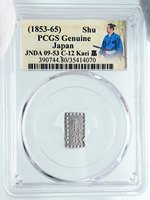
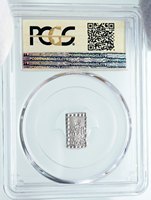
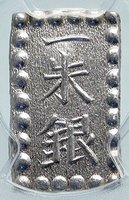
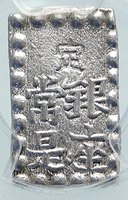
 Emperor Kōmei (孝明天皇, Kōmei-tennō, 22 July 1831 - 30 January 1867) was the 121st Emperor of Japan, according to the traditional order of succession. Kōmei's reign spanned the years from 1846 through 1867, corresponding to the final years of the Edo period.
Emperor Kōmei (孝明天皇, Kōmei-tennō, 22 July 1831 - 30 January 1867) was the 121st Emperor of Japan, according to the traditional order of succession. Kōmei's reign spanned the years from 1846 through 1867, corresponding to the final years of the Edo period.  Emperor Kōmei was infuriated with nearly every development during his reign as Emperor, and during his lifetime he never saw any foreigners nor did he know much about them. Unequal trade treaties with the Western powers, such as the Treaty of Kanagawa and the Harris Treaty were signed without Imperial sanction and in spite of the Emperor's refusal to approve them. He twice expressed his will to resign from his position in protest. During his reign he started to gain more power as the Tokugawa shogunate declined, though this was limited to consultation and other forms of deference according to protocol. Emperor Kōmei generally agreed with anti-Western sentiments, and, breaking with centuries of imperial tradition, began to take an active role in matters of state. As opportunities arose, he fulminated against the treaties and attempted to interfere in the shogunal succession. His efforts culminated in 1863 with his "Order to expel barbarians". Although the Shogunate had no intention of enforcing the order, it nevertheless inspired attacks against the Shogunate itself and against foreigners in Japan: the most famous incident was the slaying of British trader Charles Lennox Richardson, for which the Tokugawa government paid an indemnity of one hundred thousand British pounds. Other incidents included the bombardment of Shimonoseki and Kagoshima, and the destruction of Japanese warships, coastal guns, and assorted military infrastructure throughout the country. These incidents showed that Japan could not match the military might of the Westerners at the time, and that confrontation could not be the solution.
Emperor Kōmei was infuriated with nearly every development during his reign as Emperor, and during his lifetime he never saw any foreigners nor did he know much about them. Unequal trade treaties with the Western powers, such as the Treaty of Kanagawa and the Harris Treaty were signed without Imperial sanction and in spite of the Emperor's refusal to approve them. He twice expressed his will to resign from his position in protest. During his reign he started to gain more power as the Tokugawa shogunate declined, though this was limited to consultation and other forms of deference according to protocol. Emperor Kōmei generally agreed with anti-Western sentiments, and, breaking with centuries of imperial tradition, began to take an active role in matters of state. As opportunities arose, he fulminated against the treaties and attempted to interfere in the shogunal succession. His efforts culminated in 1863 with his "Order to expel barbarians". Although the Shogunate had no intention of enforcing the order, it nevertheless inspired attacks against the Shogunate itself and against foreigners in Japan: the most famous incident was the slaying of British trader Charles Lennox Richardson, for which the Tokugawa government paid an indemnity of one hundred thousand British pounds. Other incidents included the bombardment of Shimonoseki and Kagoshima, and the destruction of Japanese warships, coastal guns, and assorted military infrastructure throughout the country. These incidents showed that Japan could not match the military might of the Westerners at the time, and that confrontation could not be the solution. Japan is an island nation in East Asia. Located in the Pacific Ocean, it lies to the east of the Sea of Japan, China, North Korea, South Korea and Russia, stretching from the Sea of Okhotsk in the north to the East China Sea and Taiwan in the south. The characters that make up Japan's name mean "sun-origin", which is why Japan is often referred to as the "Land of the Rising Sun".
Japan is an island nation in East Asia. Located in the Pacific Ocean, it lies to the east of the Sea of Japan, China, North Korea, South Korea and Russia, stretching from the Sea of Okhotsk in the north to the East China Sea and Taiwan in the south. The characters that make up Japan's name mean "sun-origin", which is why Japan is often referred to as the "Land of the Rising Sun"..svg/220px-Japan_(orthographic_projection).svg.png) Archaeological research indicates that people lived in Japan as early as the Upper Paleolithic period. The first written mention of Japan is in Chinese history texts from the 1st century AD. Influence from other regions, mainly China, followed by periods of isolation, particularly from Western European influence, has characterized Japan's history. From the 12th century until 1868, Japan was ruled by successive feudal military shoguns in the name of the Emperor. Japan entered into a long period of isolation in the early 17th century, which was only ended in 1853 when a United States fleet pressured Japan to open to the West. Nearly two decades of internal conflict and insurrection followed before the Meiji Emperor was restored as head of state in 1868 and the Empire of Japan was proclaimed, with the Emperor as a divine symbol of the nation. In the late 19th and early 20th centuries, victories in the First Sino-Japanese War, the Russo-Japanese War and World War I allowed Japan to expand its empire during a period of increasing militarism. The Second Sino-Japanese War of 1937 expanded into part of World War II in 1941, which came to an end in 1945 following the atomic bombings of Hiroshima and Nagasaki. Since adopting its revised constitution in 1947, Japan has maintained a unitary constitutional monarchy with an emperor and an elected legislature called the Diet.
Archaeological research indicates that people lived in Japan as early as the Upper Paleolithic period. The first written mention of Japan is in Chinese history texts from the 1st century AD. Influence from other regions, mainly China, followed by periods of isolation, particularly from Western European influence, has characterized Japan's history. From the 12th century until 1868, Japan was ruled by successive feudal military shoguns in the name of the Emperor. Japan entered into a long period of isolation in the early 17th century, which was only ended in 1853 when a United States fleet pressured Japan to open to the West. Nearly two decades of internal conflict and insurrection followed before the Meiji Emperor was restored as head of state in 1868 and the Empire of Japan was proclaimed, with the Emperor as a divine symbol of the nation. In the late 19th and early 20th centuries, victories in the First Sino-Japanese War, the Russo-Japanese War and World War I allowed Japan to expand its empire during a period of increasing militarism. The Second Sino-Japanese War of 1937 expanded into part of World War II in 1941, which came to an end in 1945 following the atomic bombings of Hiroshima and Nagasaki. Since adopting its revised constitution in 1947, Japan has maintained a unitary constitutional monarchy with an emperor and an elected legislature called the Diet.
